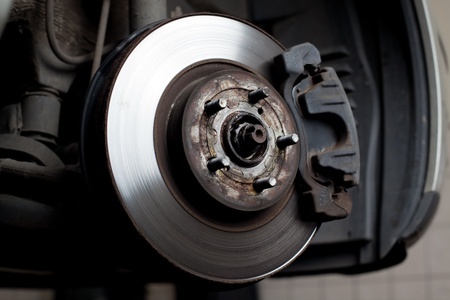If you have ever pressed the brake pedal and the car did not begin slowing down, you know the sinking feeling you get in your stomach as you begin pumping the brakes. By taking a few steps periodically to check your brakes and paying attention to warning signs, you can avoid the cost in time and money from an accident as well as ensure the safety of others.
Here is a short-list of common signs that it may be time to change the brakes.
Strange Sounds
Listen for sounds that are out of the ordinary. One that you need to recognize is your brake pad’s wear indicator. Your brake pad has a small metal piece that will produce a high-pitched sound when it is time to replace the brakes. Sometimes, it can almost sound like a bird chirping. If you hear this sound, it’s time to check the brakes.
Squeaks, squeals and grinding are also sounds that you may hear from your brakes. If you hear a grinding noice, your brake pads may be completely worn off. If so, there is a good chance your rotors are being damaged.
Visual Check
Watch your warning lights on your dashboard for indicators that your brake fluid is low or that there is an issue with the braking system. However, be sure to visually check the brake pads themselves.
If you know what to look for, you can see when brake pads need changing. The pad will appear thin. If you are not sure, go to a car tech who will recognize not only how the brake should appear but also will have an instrument to measure your brakes for wear.
Pulling to the Right or Left
If your car seems to be pulling to the left or right while driving — especially if it happens more strongly when you press the brake pedal — check your brakes. One of the brakes could be sticking. If so, the brakes will wear down more quickly and they could damage the rotor. (Think more expensive fix!) Pulling doesn’t always mean it is a brake problem. It could be poor alignment, a suspension problem, or even worn/unevenly inflated tires.
Vibrations
Feeling a pulse or vibration in the brake pedal when braking is NOT normal. It could be signal of a warped rotor. A warped rotor is a sign that something has been wrong for some time. You should notice other signs well before this happens, but if you feel a vibration, get your car checked as soon as possible.
Take Advantage of Every Opportunity
If you care for your vehicle properly, you probably change the oil regularly. While you (or your mechanic) are working on the car, make use of the time to check the thickness brake pads, inspect the rotors for grooves caused by the pads, and look closely at brake lines for any leaks. (There should not be even a drop of brake fluid anywhere near the wheel.)
If it is time to change your brakes, you should now how to choose appropriate brakes for your vehicle. The next article will help you know what to look for.

